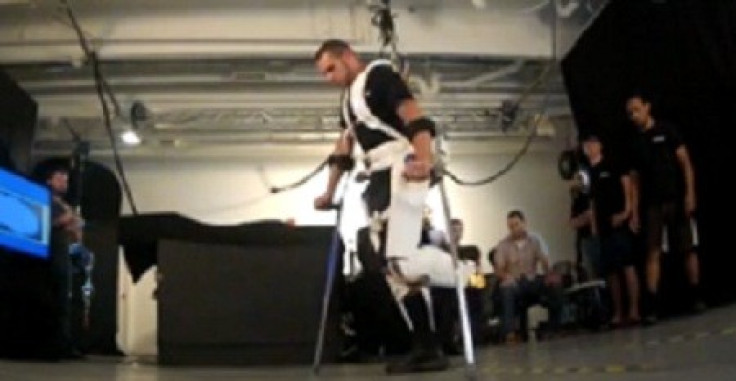Iron Man-Style Suit Could Help Paraplegics Walk

A robotic suit similar to that seen in the Iron Man film franchise has been developed by US scientists and has the potential to help paraplegics walk.
The robotic exoskeleton, named X1, was initially created to help astronauts stay healthier in space by providing resistance against leg movement.
However, the suit, which was created by NASA, the Florida Institute for Human and Machine Cognition (IHMC) and engineers from the Oceaneering Space Systems of Houston, may also be used to help people walk for the first time.
It was derived from NASA's Robonaut 2 project; the first humanoid robot in space. The suit is worn over the legs, with a harness that goes over the shoulders and back.
The 57 pound suit has four motorised joints at the hips and knees, and six passive joints. This allows for sidestepping, turning, pointing and foot flexing.
Michael Gazarik, director of NASA's Space Technology Program, said: "Robotics is playing a key role aboard the International Space Station and will be critical in our future human exploration of deep space.
"What's extraordinary about space technology and our work with projects like Robonaut are the unexpected possibilities space tech spinoffs may have right here on Earth.
"It's exciting to see a NASA-developed technology might one day help people with serious ambulatory needs to begin to walk again, or even walk for the first time."
In the UK, around 40,000 people live with paralysis and around 800 people have a spinal cord injury every year.
Potentially, the X1 could be used as an assistive walking device. The IHMC is looking to develop the suit to allow for stair climbing and walking on a variety of terrains.
Ken Ford, director and CEO of the institute, said: "The X1's high-performance capabilities will enable IHMC to continue performing cutting-edge research in mobility assistance, and expand into rehabilitation."
© Copyright IBTimes 2024. All rights reserved.






